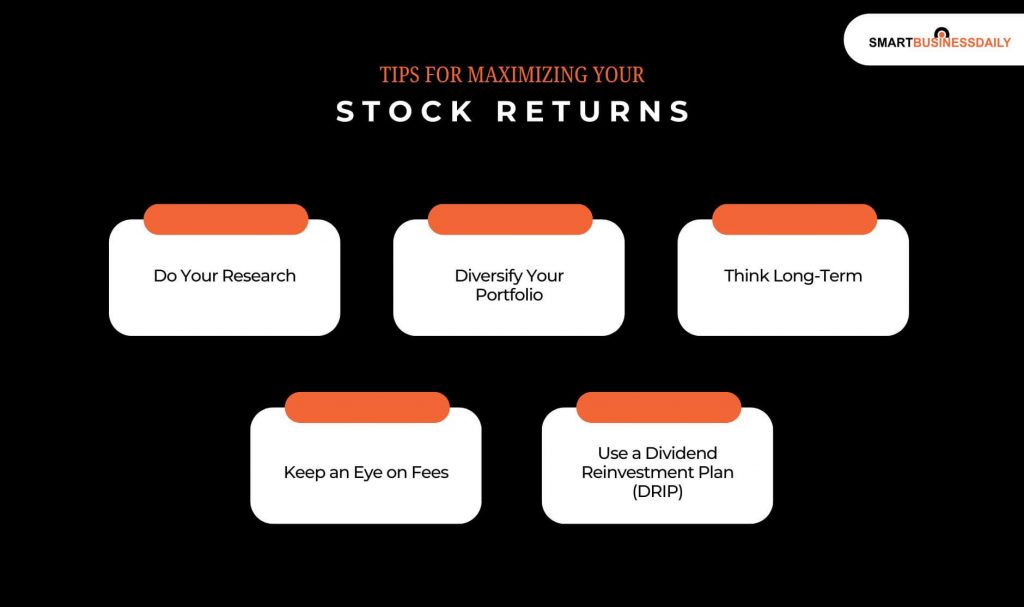What Are the Two Ways That Investors Can Make Money From Stocks?
7 Mins Read
Published on: 23 January 2025
Last Updated on: 04 December 2025

- The Basics of Stock Investing
- What Are the Two Ways That Investors Can Make Money From Stocks?
- Capital Gains: Profiting From a Stock's Price Increase
- How Does It Work?
- The Long and Short of It
- Dividends: Earning Income While You Hold
- What Are Dividends, Exactly?
- Why Do Companies Pay Dividends?
- Reinvesting Dividends
- Which Strategy Is Right for You?
- If You Want Growth
- If You Want a Steady Income
- Why Not Both?
- Tips for Maximizing Your Stock Returns
- Wrapping It Up!
When people think about investing in the stock market, the first idea that comes to mind is making money. But how does that really happen? Stocks give investors two potent ways to build wealth: capital gains and dividends.
So, if you’re new to investing, the question would be, what are the two ways that investors can make money from stocks? Capital gains are profits gained when the value of a stock increases, enabling one to sell it for more than the purchase price.
On the other hand, dividends are regular payments that some companies make to their shareholders as a thank-you for the investment. Understanding these methods is crucial in making proper decisions.
Hence building a strong portfolio. Let’s break it down so you see exactly how these strategies work and how to maximize your return.
The Basics of Stock Investing

Stocks are a cornerstone of investing, giving ordinary people the opportunity to own a piece of a company. These shares represent your stake in the company’s future—both its successes and challenges. Many investors also explore specific categories such as halal stocks to align their investments with personal financial or ethical preferences.
Companies issue shares to raise funds for growth, whether for new projects, operational needs, or expansions. By investing, you’re not only supporting the company’s efforts but also aiming to grow your own wealth. How does that growth happen?
The two primary sources of stock returns are capital gains and dividends. Capital gains occur when the price of the stock goes up so that you can sell the stock at a profit. Dividends, on the other hand, are regular payouts companies make to shareholders from their profits.
Together, these methods provide a strong framework for earning money through stocks. Knowing these basics gives you the wherewithal to make informed decisions and sets you on the path to more thoughtful, strategic investing.
What Are the Two Ways That Investors Can Make Money From Stocks?

Ready to make money from stocks? Here are the two ways that you can utilize as an investor to make money from your stocks. Read on…
Capital Gains: Profiting From a Stock’s Price Increase
The first way investors earn money from stocks is with the help of capital gains. In simple terms, this happens when you sell a stock for more than what you paid for it. For example, if you buy a share at $50 and then sell it for $75, you’ve made a $25 profit. That $25 is your capital gain.
How Does It Work?
Stock prices are influenced by various factors that drive their movement. Here are some key influences:
- Company Performance: A company with strong earnings and solid financials usually has its stock price increase.
- Market Sentiment: The overall mood of investors and the economic climate may force prices to go higher or lower.
- Industry Trends: When an industry is growing, the stocks in that industry tend to go up in price.
The Long and Short of It
Most investors usually look for long-term capital gains achieved by holding stocks for over a year. This approach allows your investment to benefit from compound growth and often comes with lower tax rates in many regions, making it a favorite wealth-building strategy.
On the other hand, there are short-term capital gains, which apply to stocks held less than a year. While it can bring quick income, it incurs higher taxes—which are often taxed at ordinary income rates, which may push you into one of the higher income tax brackets for 2025—and greater risks due to the volatility of the markets.
Short-term trading requires more attention and could be pretty unpredictable; however, it appeals to people who want their returns immediately.
Understanding how capital gains work is crucial, whether it’s long-term growth or looking at short-term opportunities. They are one of the main ways in which investors grow their wealth and provide a direct connection between the performance of the markets and personal financial growth.
Dividends: Earning Income While You Hold
The second way to make money is through dividends. Dividends are regular payments that companies make to their shareholders as a way of sharing profits. Think of it as a company’s thank-you for your trust and investment, with the added bonus of extra cash.
What Are Dividends, Exactly?
Dividends are usually paid out quarterly, which is every three months, and are expressed as a dollar amount per share.
So, if a company pays a $1 dividend and owns 100 shares, you will get $100. Those payments are either sent directly to you in cash or reinvested into more shares, whichever you prefer.
Why Do Companies Pay Dividends?
Not all companies pay dividends, but the ones that do are usually well-established businesses with regular profits. Companies in utilities or consumer staples often prioritize rewarding shareholders in this way.
Dividends attract income-focused investors, such as retirees, who value a regular and predictable source of income. For these companies, paying dividends signals financial stability and a commitment to sharing success with investors.
Reinvesting Dividends
Many investors choose to reinvest their dividends rather than take them as cash. This technique uses your dividend payout to buy more shares, which can turbocharge your investment growth over time. Because of compounding, reinvested dividends may bring in exponential returns, meaning your money is working harder for you.
Dividends provide a way to generate income while holding onto your stocks. Whether you opt to reinvest or cash them out, these are great tools in wealth building and maintenance of financial stability.
Which Strategy Is Right for You?

The choice between capital gains and dividends, or even a combination of both, depends on your financial goals, risk tolerance, and time horizon. Both strategies work differently and suit various investor profiles.
If You Want Growth
If you want to grow your investments, focus on stocks with high price appreciation potential. You can find these opportunities in dynamic sectors such as technology or health care.
Firms in such industries usually invest their earnings in innovation, research, and expansion, which might result in great increases in stock prices over the long term. Growth stocks do not yield immediate returns but may offer spectacular capital gains in the long run.
If You Want a Steady Income
Those looking to create a regular flow of income can consider dividend-paying stocks.
Companies operating in stable businesses, like utilities, consumer staples, and finance, prefer to return a portion of their profit to shareholders through dividends. These stocks attract retirees or income-focused investors looking for periodic payouts.
Why Not Both?
A portfolio balanced with both growth stocks and dividend-paying stocks offers the best of both worlds. Growth stocks contribute to long-term wealth accumulation, while dividends provide consistent income.
This diversified approach allows investors to profit from market opportunities while reducing risks. Combining these strategies will enable you to build a portfolio that aligns with your financial goals and investment timeline.
Tips for Maximizing Your Stock Returns

Let me know more about the tips that will help you maximize the returns on your stock. To make the most of these two methods, keep the following tips in mind:
- Do Your Research
Whether you’re chasing capital gains or dividends, constantly research the company’s financial health, industry position, and growth potential.
- Diversify Your Portfolio
Never put all the eggs in just one single basket. Try to spread your investments in different sectors and companies to minimize risk.
- Think Long-Term
The stock market can be volatile in the short term, but over the long run, it has historically delivered solid returns. Patience pays off!
- Keep an Eye on Fees
Watch out for trading fees, which can eat into your profits, especially if you’re frequently buying and selling stocks.
- Use a Dividend Reinvestment Plan (DRIP)
If you’re investing in dividend stocks, consider enrolling in a DRIP to reinvest your earnings and grow your investment faster automatically.
Wrapping It Up!
So, what are the two ways investors can make money from stocks? Clearly, through capital gains and dividends.
Whether you’re the type who gets a kick out of watching stock prices rise or someone who enjoys the stability of a regular paycheck, the stock market has something for you. By knowing these methods and lining them up with your goals, you will set yourself up to create a strategy for success.
Just remember to keep informed, stay patient, and base decisions on your personal financial situation. It does not have to be complicated; with these two powerful means of earning, you are well on your way to making the most of your money.
YOU MAY ALSO LIKE:



















Comments Are Closed For This Article